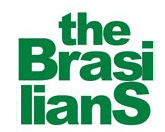A total of nine samba musical instruments, including the pandeiro (a type of hand frame drum), tam-tam (a percussion instrument, often referred to as a gong), cuíca (a type of friction drum), and tambourine, have been officially recognized as part of Brazil’s national cultural heritage. The law formalizing this recognition was sanctioned by President Luiz Inácio Lula da Silva.
The craftsmanship techniques used to create these musical instruments are also recognized as valuable cultural practices and traditions.
The list of nine percussion instruments commonly used in samba circles and samba schools also includes the surdo (a type of bass drum), rebolo (another type of drum), frying pan, timba, and repique de mão (hand drum).
As stated in the new law, these instruments must be acknowledged as expressions of national culture when they follow the traditional practices and methods specific to their craftsmanship. The details regarding the production processes for these instruments will be specified in an upcoming decree.
Master percussionist Jackie Cunha, 32, from São Paulo, is skilled in playing all of these instruments except the cuíca. She fondly recalls being introduced to them as a child when her mother took her to samba circles in the city. By the age of seven, she was already mastering her first pandeiro.
For the percussionist, the official recognition of samba instruments is a cause for celebration, even though it feels long overdue.
“The importance of this recognition is immense. Instruments like the surdo, wood box, tambourine, and pandeiro are used in many different rhythms, not just samba, because they bring a distinct sound, a wealth of detail, and a richness of tone,” she explained.
Percussionist Glauber Marques represents the third generation of cuíca players in his family. He learned the instrument from his grandfather, a drummer, at Nenê de Vila Matilde—one of São Paulo’s most traditional samba schools.
“The soul of samba lies in the instruments. The true essence is in the rhythm, in the sound. Without instruments, there is no samba,” he explains. “As my grandfather used to say, the cuíca is the most mischievous instrument; it both cries and laughs at the same time.”
Drum master Rafa is an expert in samba instruments and currently oversees 172 drummers at the Imperatriz da Pauliceia samba school. In 2015, she made history by becoming the first woman to lead a samba school percussion band in São Paulo.
For Rafa, regardless of the tuning or melodic tempo—whether in a samba circle or a samba school percussion band during Carnival—musical instruments provide samba with its body and soul.
Source: Agência Brasil


